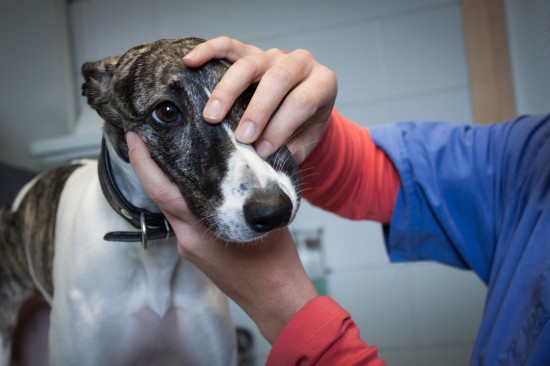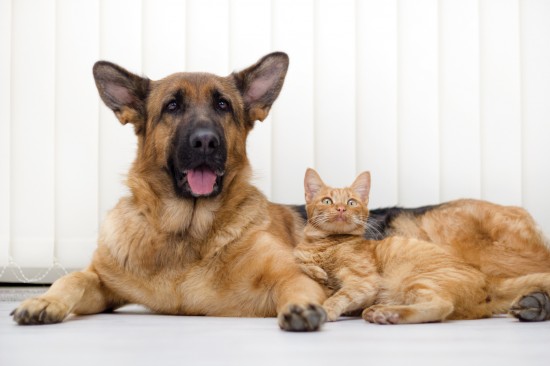Winnie came to the hospital because she'd been vomiting and lost her appetite over the past two days. As her McKinney veterinarian, I noticed that she tensed when I tried to palpate her abdomen, and she walked with an arched back.
This case illustrates symptoms we actually see in patients with a seemingly unrelated problem - one involving the spine. Fortunately we have the right modern tool to bring relief to these patients: the therapeutic laser.
Abdominal X-rays demonstrated that Winnie's entire large intestine was full of hard-packed stool that probably hadn't passed in a couple of days. Her urinary bladder was also abnormally full.
These abnormalities are commonly seen when animals are in too much pain to urinate or defecate, and X-rays of Winnie's vertebral column revealed the reason for the discomfort: Winnie had a condition known as spondylosis deformans in which new bone grows between individual vertebrae in an attempt to form a bridge between them. This occurs when the body attempts to control motion between the vertebrae.
The bony growth and inflammation that exist in the area cause pain and can interrupt nerves passing through the area. This causes weakness of the rear legs and a lack of sensation in the colon and urinary bladder. In Winnie's case, however, I suspected that her constipation and full bladder were caused by pain when she attempted to void.
When animals are this constipated, vomiting usually ensues because food can't pass through the intestinal tract. Winnie's main symptom was vomiting, but the spinal disorder was the root of her problem.
We treated Winnie with medication to soften the stool and encourage defecation, but the most important parts of her treatment were the laser therapy sessions that helped control her spinal pain and inflammation. We did one treatment right away, and scheduled Winnie for five more sessions over the next few days.
We programmed the laser to treat chronic inflammation. Two separate laser beams at different frequencies are able to treat different problems: one frequency is effective in controlling swelling and inflammation; the other stops pain. The entire session only takes 5-8 minutes, and patients are sometimes perceptibly improved after the first one!
As a McKinney veterinarian, I usually see a noticeable improvement in pain levels after one or two treatments in these cases. Even dogs with very weak rear legs begin walking better after a couple of sessions. Most patients only need one session every three to five weeks after the initial series to control their symptoms.
In Winnie's case, she was able to urinate that day and she passed all of the stool the very next day. Her painful posture improved after the second laser session, and the vomiting ended as well. She's back to normal now, and will probably get one treatment per month to sustain that.
Medicine is improving every day, and McKinney veterinarians are better able to help our patients because of it.
mckinney veterinarian, TX 75071
Stonebridge Animal Hospital
5913 Virginia Parkway
McKinney, Texas 75071
469-507-2433

 Coccidia In Dogs
Coccidia In Dogs
Coccidia In Dogs
Coccidia In Dogs
 Five Easy Steps To Curb Inappropriate Chewing In Dogs And Puppies
Five Easy Steps T
Five Easy Steps To Curb Inappropriate Chewing In Dogs And Puppies
Five Easy Steps T
 Lumps And Growths In The Mouth Of The Dog
Lumps And Growths
Lumps And Growths In The Mouth Of The Dog
Lumps And Growths
 8 Tips Concerning The Nutritional Management Of Renal Dysfunction In Dogs & Cats
8 Tips Concerning
8 Tips Concerning The Nutritional Management Of Renal Dysfunction In Dogs & Cats
8 Tips Concerning
 Cockatoos: The Most Affectionate Parrots On The Planet
Cockatoos: The Mo
Cockatoos: The Most Affectionate Parrots On The Planet
Cockatoos: The Mo